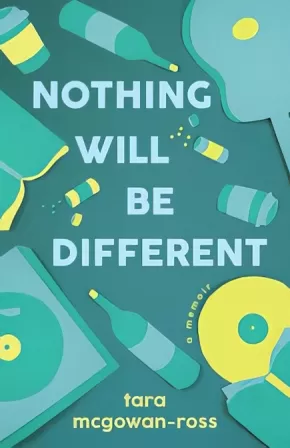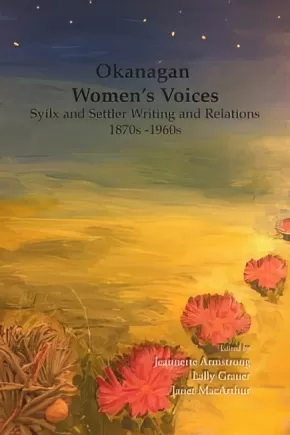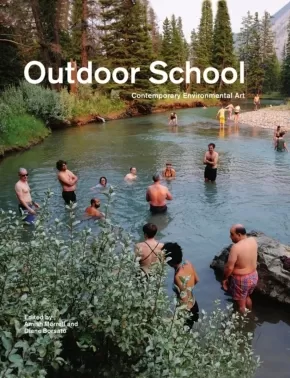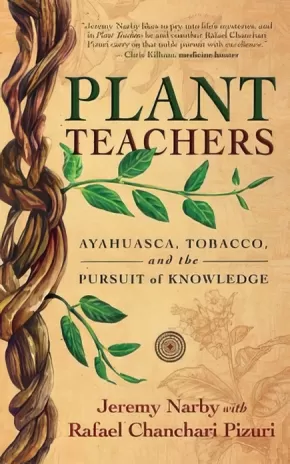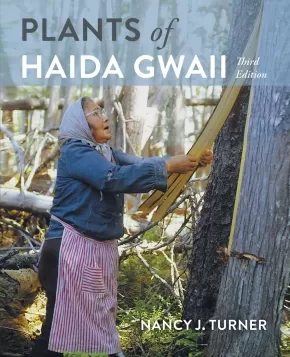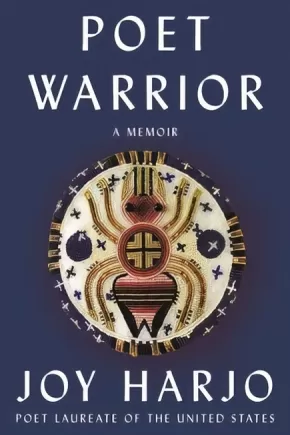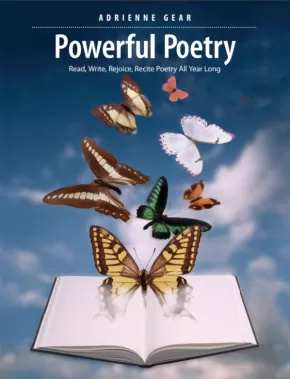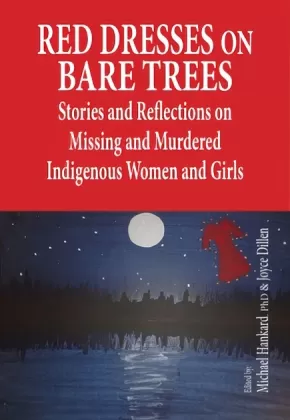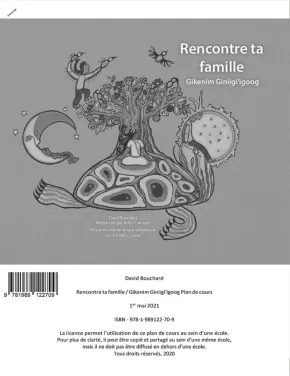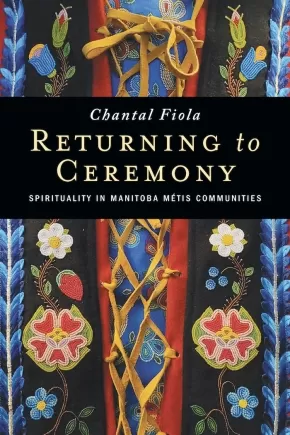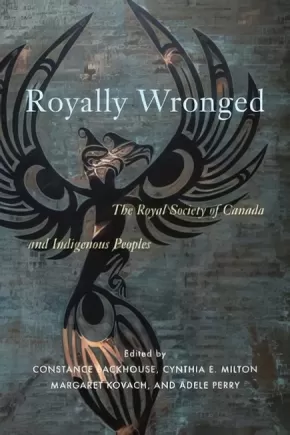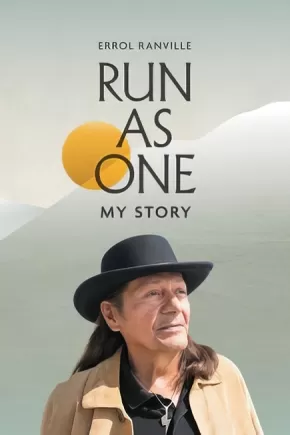
Adult Book
706
-
720
of
1380 Results;
Sort By
Go To
of 92
Nothing Will Be Different: A Memoir
$21.99
Format:
Paperback
Text Content Territories:
Indigenous Canadian; First Nations; Mi'kmaq;
Reading Level: N/A
ISBN / Barcode: 9781459748736
Synopsis:
Synopsis:
A neurotic party girl's coming-of-age memoir about learning to live before getting ready to die.
Tara has it pretty good: a nice job, a writing career, a forgiving boyfriend. She should be happy. Yet Tara can’t stay sober. She’s terrible at monogamy. Even her psychiatrist grows sick of her and stops returning her calls. She spends most of her time putting out social fires, barely pulling things off, and feeling sick and tired.
Then, in the autumn following her twenty-seventh birthday, an abnormal lump discovered in her left breast serves as the catalyst for a journey of rigorous self-questioning. Waiting on a diagnosis, she begins an intellectual assessment of her life, desperate to justify a short existence full of dumb choices. Armed with her philosophy degree and angry determination, she attacks each issue in her life as the days creep by and winds up writing a searingly honest memoir about learning to live before getting ready to die.
Reviews
"This delightful book, appropriately enough, works like your favourite mixtape. It's got everything you want, and somehow it all fits. The arrangement is unexpected but, in retrospect, seems obviously right. Here is softness and pain, intimacy and revulsion, flourishing and sickness. And McGowan-Ross just sounds so good." — Sasha Chapin, author of All The Wrong Moves
"Tara McGowan-Ross is an unpretentious poet and philosopher weaving together meaning from the pain, grief, heartache, as well as simple joy of being alive. Nothing Will Be Different is a meditation on amor fati: the love of fate, the love of what is. By being with all of it: trauma, profound loss, the reality of death, addiction, precarity, the gig economy, hard work, love both dizzying and secure, sex, and insatiable desire, Tara shows us that transformation comes not through a battle against what is, but from the willingness to be changed by it." — Clementine Morrigan, author of Love Without Emergency
Additional Information
240 pages | 5.50" x 8.50"
Okanagan Women's Voices: Indigenous Settler Writing and Relations
$34.95
Editors:
Format:
Paperback
Text Content Territories:
Indigenous Canadian; First Nations; Salish; Interior Salish; Syilx (Okanagan);
Reading Level: N/A
ISBN / Barcode: 9781926886527
Synopsis:
Synopsis:
The writing and relations between Syilx women and settler women, largely of European descent, who came to inhabit the British Columbia southern interior from the mid-nineteenth to the early twentieth centuries.
Educator Information
Okanagan Women’s Voices features the writing and stories of seven women: Susan Moir Allison (1845-1937), Josephine Shuttleworth (1866-1950), Eliza Jane Swalwell (1868-1944), Marie Houghton Brent (1870-1968), Hester Emily White (1877-1963), Mourning Dove (1886-1936) and Isabel Christie MacNaughton (1915-2003).
Additional Information
6.00" x 9.00" | Paperback
Outdoor School
$44.95
Editors:
Format:
Hardcover
Text Content Territories:
Indigenous Canadian;
ISBN / Barcode: 9781771622844
Synopsis:
Synopsis:
Outdoor School features recent works of contemporary environmental art and writing by more than twenty-five Canadian and Indigenous artists who propose radical new ways of thinking and being outdoors together.
For more than a decade, the Outdoor School project has provided a framework for interdisciplinary artists to come together and share projects that reimagine ways of relating with the landscape.
The experiential and community-based art projects described in Outdoor School present an alternative to scientific, commercial and colonial conceptions of land and nature in the face of climate change and mass extinction. These art practices include activities like mushroom foraging, water witching, trespassing, pumpkin-boat sailing, cloud identifying, ravine running, honey extracting, spell conjuring, rabbit hunting, coyote walking and more. The project calls attention to creative, counter-cultural works that are focused on education, community and place, and blur the boundaries between art and life, nature and culture.
Featuring interviews, essays and over 150 photographs, Outdoor School is an important contribution to discussions of contemporary art and ecology, foregrounding work that is marginal and ephemeral by nature.
Artists featured in Outdoor School include Alana Bartol, Diane Borsato, Bill Burns, Carolina Caycedo, Sameer Farooq, FASTWÜRMS, Ayumi Goto, Maggie Groat, Gabrielle Hill, Peter Morin, Public Studio, Helen Reed, Genevieve Robertson, Jamie Ross, Aislinn Thomas, Vibrant Matter, Jay White, Tania Willard, Terri-Lynn Williams-Davidson and D'Arcy Wilson.
Educator Information
Additional Information
192 pages | 8.00" x 10.00" | colour photographs
Authenticity Note: This work has received the Authentic Indigenous Text label because of the Indigenous contributions to this work. Non-Indigenous contributors are also featured, and the editors are not Indigenous. It is up to readers to determine if this resource is authentic for their purposes.
Owóknage: The Story of Carry The Kettle Nakoda First Nation
$39.95
Format:
Paperback
Text Content Territories:
Indigenous Canadian; First Nations; Assiniboine (Nakoda Oyadebi); Carry The Kettle Nakoda First Nation;
Grade Levels: University/College;
ISBN / Barcode: 9780889778146
Synopsis:
Synopsis:
The exhaustive, definitive history and stories of the Cega‘ K´i na Nakoda Oyáté (Carry The Kettle Nakoda First Nation), told by the people themselves.
Born out of a meticulous, well-researched historical and current traditional land-use study led by Cega̔ K´iɳna Nakoda Oyáté (Carry the Kettle Nakoda First Nation), Owóknage is the first book to tell the definitive, comprehensive story of the Nakoda people (formerly known as the Assiniboine), in their own words. From pre-contact to current-day life, from thriving on the Great Plains to forced removal from their traditional, sacred lands in the Cypress Hills via a Canadian “Trail of Tears” starvation march to where they now currently reside south of Sintaluta, Saskatchewan, this is their story of resilience and resurgence.
Educator Information
Based on a comprehensive traditional and current land-use study and history of the Carry The Kettle First Nation, combining oral history from Nation Elders and historical/anthropological research.
The destruction of the bison on the Canadian plains, disease, and Canada’s various damaging colonial policies brought profound changes and hardships to the Nakoda; this book chronicles the changes they faced and illustrates their endurance throughout history.
Most of the victims of the Cypress Hill Massacre were ancestors of the Carry The Kettle Nakoda First Nation, and many were forced out of their traditional lands on a Canadian Trail of Tears in 1882–83.
Additional Information
412 pages | 6.00" x 9.00" | Paperback
Peyakow: Reclaiming Cree Dignity, A Memoir
$29.95
Format:
Hardcover
Text Content Territories:
Indigenous Canadian; First Nations; Cree (Nehiyawak);
Grade Levels: 12; University/College;
ISBN / Barcode: 9781771622318
Synopsis:
Synopsis:
Mamaskatch, Darrel J. McLeod’s 2018 memoir of growing up Cree in Northern Alberta, was a publishing sensation—winning the Governor General's Literary Award for Non-Fiction, shortlisted for many other major prizes and translated into French and German editions. In Peyakow, McLeod continues the poignant story of his impoverished youth, beset by constant fears of being dragged down by the self-destruction and deaths of those closest to him as he battles the bullying of white classmates, copes with the trauma of physical and sexual abuse, and endures painful separation from his family and culture. With steely determination, he triumphs: now elementary teacher; now school principal; now head of an Indigenous delegation to the UN in Geneva; now executive in the Government of Canada—and now a celebrated author.
Brutally frank but buoyed throughout by McLeod’s unquenchable spirit, Peyakow—a title borrowed from the Cree word for “one who walks alone”—is an inspiring account of triumph against unimaginable odds. McLeod’s perspective as someone whose career path has crossed both sides of the Indigenous/white chasm resonates with particular force in today’s Canada.
Reviews
"Bravo! A job well done. You, my friend, are a very good writer." — Tomson Highway, February 2021
"This is the story of the remarkable professional life of a remarkable man. Whatever he worked on, including such important government files as the Nisga’a and Dene land settlements, he started out and remained a fierce champion of Indigenous rights. Wherever he travelled, he carried with him his past, the joys and tragedies of his own family, and the dignity and courage of his Cree ancestors. The book is a story of triumph, made particularly moving because McLeod doesn’t hide the demons he wrestles with as a two-spirited and Indigenous man." — Lorna Crozier, author of Through the Garden, February 2021
"McLeod boldly reconnects and reflects upon decades of lived experiences from familial, Cree traditional life of living off the land, to a professional (ultimately international) life dedicated to Indigenous rights and wellbeing. By reconnecting stories torn apart by poverty, tragic deaths, racism, homophobia and bureaucratic white privilege, McLeod performs a sacred act." — Betsy Warland, author of Oscar of Between, February 2021
Additional Information
240 pages | 6.00" x 9.00" | 8-page photo insert
Plant Teachers: Ayahuasca, Tobacco, and the Pursuit of Knowledge
$30.50
Format:
Hardcover
Text Content Territories:
Indigenous;
Reading Level: N/A
ISBN / Barcode: 9781608687732
Synopsis:
Synopsis:
A trailblazing anthropologist and an indigenous Amazonian healer explore the convergence of science and shamanism
“The dose makes the poison,” says an old adage, reminding us that all substances have the potential to heal or to harm, depending on their use. This is especially true of tobacco. Although Western medicine treats it as a harmful addictive drug, tobacco is considered medicinal by indigenous people of the Amazon rainforest. In its unadulterated form, it holds a central place in their repertoire of traditional medicines. Along with the hallucinogen ayahuasca, tobacco forms a part of treatments designed to heal the body, stimulate the mind, and inspire the soul with visions. Anthropologist Jeremy Narby first learned of the shamanic uses of ayahuasca and tobacco while conducting fieldwork in the Amazon region decades ago. After witnessing the transformative power of these mind-altering plants, Narby embarked on a quest to understand their effects on human consciousness. His search led him to contact Rafael Chanchari Pizuri, a traditional healer from the Peruvian Amazon. In Plant Teachers, Narby and Pizuri hold a cross-cultural dialogue that explores the similarities between ayahuasca and tobacco, the role of these plants in indigenous cultures, and the hidden truths they reveal about nature. Juxtaposing two distinct worldviews, Plant Teachers invites readers on a wide-ranging journey through anthropology, botany, and biochemistry, while raising tantalizing questions about the relationship between science and other ways of knowing.
Additional Information
144 pages | 5.00" x 8.00" | Hardcover
Plants of Haida Gwaii: Third Edition
$29.95
Format:
Paperback
Text Content Territories:
Indigenous Canadian; First Nations; Haida;
ISBN / Barcode: 9781550179149
Synopsis:
Synopsis:
For many thousands of years the lands and waters of Haida Gwaii have been home to the Haida. Plants of Haida Gwaii, written with the cooperation and collaboration of Haida knowledge holders and botanical experts, is a detailed and insightful record of the traditional uses of over 150 species of native plants. Moreover, it explains the systems of knowledge and understanding that enabled the Haida to use the resources of their islands sustainably from one generation to the next over millennia.
The Haida names of these plants indicate their importance, as do the many narratives featuring them. From the ts’uu—massive western red-cedars—of the forests which provide wood used for canoes, house posts, poles and boxes, and bark carefully harvested for weaving mats, baskets and hats, to the ngaal—tough, resilient fronds of giant kelp—used to harvest herring eggs, the botanical species used by the Haida are found from the ocean to the mountain tops, and are as important today as ever before. With over 250 photographs and illustrations, this book is both beautiful and informative.
Additional Information
272 pages | 7.50" x 9.25"
Authenticity Note: As there are contributions from Haida knowledge holders, this work has been labelled as containing authentic Indigenous text. It is up to readers to determine if this work is authentic for their purposes.
Poet Warrior: A Memoir
$34.00
Format:
Hardcover
Text Content Territories:
Indigenous American; Native American; Muscogee (Creek);
Reading Level: N/A
ISBN / Barcode: 9780393248524
Synopsis:
Synopsis:
Three-term poet laureate Joy Harjo offers a vivid, lyrical, and inspiring call for love and justice in this contemplation of her trailblazing life.
Joy Harjo, the first Native American to serve as U.S. poet laureate, invites us to travel along the heartaches, losses, and humble realizations of her "poet-warrior" road. A musical, kaleidoscopic, and wise follow-up to Crazy Brave, Poet Warrior reveals how Harjo came to write poetry of compassion and healing, poetry with the power to unearth the truth and demand justice.
Harjo listens to stories of ancestors and family, the poetry and music that she first encountered as a child, and the messengers of a changing earth—owls heralding grief, resilient desert plants, and a smooth green snake curled up in surprise. She celebrates the influences that shaped her poetry, among them Audre Lorde, N. Scott Momaday, Walt Whitman, Muscogee stomp dance call-and-response, Navajo horse songs, rain, and sunrise. In absorbing, incantatory prose, Harjo grieves at the loss of her mother, reckons with the theft of her ancestral homeland, and sheds light on the rituals that nourish her as an artist, mother, wife, and community member.
Moving fluidly between prose, song, and poetry, Harjo recounts a luminous journey of becoming, a spiritual map that will help us all find home. Poet Warrior sings with the jazz, blues, tenderness, and bravery that we know as distinctly Joy Harjo.
Additional Information
240 pages | 5.50" x 8.25" | 10 Photographs | Hardcover
Powerful Poetry: Read, Write, Rejoice, Recite Poetry All Year Long
$28.95
Format:
Paperback
ISBN / Barcode: 9781551383521
Synopsis:
Synopsis:
The power of poetry is at your fingertips with Adrienne Gear’s latest book!
Powerful Poetry celebrates the beauty, power and pleasure of poetry in the classroom. This highly readable book outlines the many benefits of integrating poetry into your literacy program, including building reading, writing and speaking skills, nurturing creativity and celebrating language. Powerful Poetry provides practical, enjoyable lessons for integrating poetry into your year-long literacy program and engaging ways to introduce poetic structure, language, tools and devices. Book lists introduce a wide range of wonderful poems and poets. Ideal for new and experienced teachers who are looking to bring the power of poetry into their classroom.
Additional Information
128 pages | 8.38" x 10.88" | Paperback
Red Dresses on Bare Trees: Stories and Reflections on Missing and Murdered Indigenous Women and Girls (3 in Stock, Out of Print)
$33.00
Format:
Paperback
Text Content Territories:
Indigenous Canadian;
Reading Level: N/A
ISBN / Barcode: 9781926476520
Synopsis:
Synopsis:
This book deals with Missing and Murdered Indigenous Women and Girls, an extremely painful topic—one that we struggled at times to write or think about, and it raises some painful memories and feelings, not only for us but particularly those whose stories and reflections are within it.
The book includes essays and reflections by both men and women, because it seeks to help bring balance to our collective, equally important and unique, roles and responsibilities. It hopes to incorporate Indigenous knowledge principles about relationships and love in the hope that we can begin to emulate and live our lives in balance. In this circle, we begin in the eastern direction with respect—seeing someone from all sides, and having ‘1,000 cups of tea’ with them; moving into time in the south where we must physically, mentally and spiritually sit and spend time with someone; then to empathy or feeling in the west where our connection to a person is strong enough so we hurt when they are hurting; then finally, into the gift of movement, where caring behaviour in the northern direction drives us to actually do something about it.
Reviews
"It is uncanny how all these writers’ contributions came together in one book. It gives such a comprehensive observation of historical and current systems that create these vulnerabilities. I have to admit, I felt anger rise up in me at all these injustices. This is an important work for anyone in Canada, and will be especially useful to policymakers. Well done! You have just changed the world." - Lorraine Rekmans
"This book is a highly recommended read for persons desiring to hear truth, and to work toward genuine and responsive reconciliation with Indigenous Peoples." - Barbara Waterfall, PhD
Educator Information
Table of Contents
Acknowledgements
Table of Contents
Foreword
Introduction
1. Colonization, ‘Truth,’ and ‘Reconciliation’ for Indigenous Women and Girls?
By: Kelly M. Bugler, John G. Hansen, & Michael Hankard
2. Taking Me Home: The Life of Mere Hiki
By: Taima Moeke-Pickering
3. Traveling the Spirit Road: Anna Mae Pictou Aquash
By Cynthia Landrum
4. How Are Indigenous Women’s Experiences of Policing and Homelessness Linked to MMIWG?
By: Carol Kauppi & Rebecca Schiff
5. Indigenous Responses to Gendered and Colonial Violence: A View from Baawaating
By: Vivian Jiménez-Estrada &Eva Dabutch
6. Walking the Sweetgrass Road Together
By: Michael Hankard
7. Rites of Passage: Building Strength and Resilience
By: Joey-Lynn Wabie
8. Colonial Exceptionalism and the MMIWG Genocide: Bringing Words of the Silent to the Ears of the Deaf
By: Nawel Hamidi
9. Shinning the Light Into Dark Places: Going Beyond Statistics and Literature Reviews and into the Humanity of MMIWG
By: Sharon L. Acoose, & John E. Charlton
About the Authors
Table 1. Aboriginal Offender Statistics
Graphic 1. Mere Hiki
Additional Information
Pages: 150 | Size: 6” x 9” | Paperback
Red Nation Rising: From Bordertown Violence to Native Liberation
$25.50
Format:
Paperback
Text Content Territories:
Indigenous American; Native American;
Grade Levels: Preschool;
ISBN / Barcode: 9781629638317
Synopsis:
Synopsis:
Red Nation Rising is the first book ever to investigate and explain the violent dynamics of bordertowns. Bordertowns are white-dominated towns and cities that operate according to the same political and spatial logics as all other American towns and cities. The difference is that these settlements get their name from their location at the borders of current-day reservation boundaries, which separate the territory of sovereign Native nations from lands claimed by the United States.
Bordertowns came into existence when the first US military forts and trading posts were strategically placed along expanding imperial frontiers to extinguish indigenous resistance and incorporate captured indigenous territories into the burgeoning nation-state. To this day, the US settler state continues to wage violence on Native life and land in these spaces out of desperation to eliminate the threat of Native presence and complete its vision of national consolidation “from sea to shining sea.” This explains why some of the most important Native-led rebellions in US history originated in bordertowns and why they are zones of ongoing confrontation between Native nations and their colonial occupier, the United States.
Despite this rich and important history of political and material struggle, little has been written about bordertowns. Red Nation Rising marks the first effort to tell these entangled histories and inspire a new generation of Native freedom fighters to return to bordertowns as key front lines in the long struggle for Native liberation from US colonial control. This book is a manual for navigating the extreme violence that Native people experience in reservation bordertowns and a manifesto for indigenous liberation that builds on long traditions of Native resistance to bordertown violence.
Reviews
“The authors of this brilliant exposition on bordertown violence are no ordinary academics, although academia would benefit from having more faculty scholars such as these. They are also master organizers, a part of a network of indigenous and other community organizers in Indian Country fueling the process of decolonization of Native lands and communities. Bordertown violence is as old as US colonization of the continent itself, and it persists today in the towns and cities that border Native reservations and communities all over US-claimed territory and is replicated in even more distant cities that have large Native populations, many of whom are homeless. This may be the most important organizing manual ever produced by a social movement in the United States.”—Roxanne Dunbar-Ortiz, author of An Indigenous Peoples’ History of the United States
“The borders racking our world are in constant motion and, like the explosive grinding of tectonic plates, the violence of this movement and resistance to it emerges most sharply at the edges. This essential volume brings together militant intellectuals to provide an accessible introduction to the violent encirclement of indigenous communities, and to provide crucial concept-weapons to deepen ongoing collective resistance.” —George Ciccariello-Maher, author of Decolonizing Dialectics
“A remarkable body of work that effectively weaves long overdue native scholarship and historical analysis of settler colonialism with direct and timely frontline reports on the continuing bordertown wars and conflicts in occupied native territories. Offers a comprehensive framework for advancing present and future indigenous resistance and liberation struggles.”—John Redhouse (Diné)
Additional Information
176 pages | 6.00" x 9.00" | Paperback
Rencontre ta famille plan de cours (LP)
$7.99
Artists:
Format:
Paperback
Text Content Territories:
Indigenous Canadian; First Nations; Anishinaabeg; Ojibway;
ISBN / Barcode: 9781989122709
Synopsis:
Synopsis:
This Teacher Lesson Plan accompanies the book Rencontre ta famille. Includes comprehension questions, group activities, wordsearch, colouring pages etc. Mother Earth, we come from her, we go to her, without her we wouldn't be here, she gives all of us life and because of her we are all one family. In many segments of Indigenous life we speak of Mother Earth, Father Sky, Grandfather Sun, and Grandmother Moon. Meet Your Family is a rhythmic poem that will enlighten readers on how to view these important figures and share a greater concept of seeing the world as our natural family.
Rencontre ta famille is presented in both French and Ojibway. An additional softcover book written in Ojibway with a phonetics guide is included inside this hardcover book.
Educator Information
This is the teacher lesson plan for Rencontre ta famille.
This teacher lesson plan is also available in English: Meet Your Family Teacher Lesson Plan
Additional Information
12 pages | 8.50" x 11.00"
Returning to Ceremony: Spirituality in Manitoba Métis Communities
$27.95
Format:
Paperback
Text Content Territories:
Indigenous Canadian; Métis;
Grade Levels: University/College;
ISBN / Barcode: 9780887559624
Synopsis:
Synopsis:
Returning to Ceremony is the follow-up to Chantal Fiola’s award-winning Rekindling the Sacred Fire and continues her ground-breaking examination of Métis spirituality, debunking stereotypes such as “all Métis people are Catholic,” and “Métis people do not go to ceremonies.” Fiola finds that, among the Métis, spirituality exists on a continuum of Indigenous and Christian traditions, and that Métis spirituality includes ceremonies. For some Métis, it is a historical continuation of the relationships their ancestral communities have had with ceremonies since time immemorial, and for others, it is a homecoming—a return to ceremony after some time away.
Fiola employs a Métis-specific and community-centred methodology to gather evidence from archives, priests’ correspondence, oral history, storytelling, and literature. With assistance from six Métis community researchers, Fiola listened to stories and experiences shared by thirty-two Métis from six Manitoba Métis communities that are at the heart of this book. They offer insight into their families’ relationships with land, community, culture, and religion, including factors that inhibit or nurture connection to ceremonies such as sweat lodge, Sundance, and the Midewiwin. Valuable profiles emerge for six historic Red River Métis communities (Duck Bay, Camperville, St Laurent, St François-Xavier, Ste Anne, and Lorette), providing a clearer understanding of identity, culture, and spirituality that uphold Métis Nation sovereignty.
Reviews
"Grounded in the communities of her home territory, Chantal Fiola brings critical insider knowledge, insight and analysis to the topic of Metis spirituality. The combination of historical background with contemporary voice offers an understanding of the Metis spirit that will nurture the nation and enlighten the broader public." — Kim Anderson
“Returning to Ceremony is a courageous book given the tensions surrounding religious affiliation in the Metis community. It is a challenging topic that has been dealt with sensitively, with balance and candour."— Blair Stonechild
Educator Information
Table of Contents
Ch 1: Métis Spirituality: Confronting Stereotypes
Ch 2: Searching for Our Stories in Oral History
Ch 3: Combing the Written Record for Our Stories
Ch 4: A Métis-Centred Study and Approach
Ch 5: Six Red River Métis Communities
Ch 6: Meeting the Participants
Ch 7: Métis Family Relationships with Land, Language, and Identity
Ch 8: Métis Family Relationships with Culture and Religion
Ch 9: Exploring Self-Identification
Ch 10: Spirituality, Types of Ceremonies, and Disconnection Factors
Ch 11: Connection Factors, Impacts upon Identity, and Others’ Reactions
Ch 12: Métis Spirituality Today
Additional Information
272 pages | 6.00" x 9.00" | Index, Bibliography | Paperback
Royally Wronged: The Royal Society of Canada and Indigenous Peoples
$39.95
Editors:
Format:
Paperback
Text Content Territories:
Indigenous Canadian;
Grade Levels: University/College;
ISBN / Barcode: 9780228009030
Synopsis:
Synopsis:
Probing Royal Society of Canada scholars’ complicity in the marginalization of Indigenous knowledge and the destruction of Indigenous communities.
The Royal Society of Canada’s mandate is to elect to its membership leading scholars in the arts, humanities, social sciences, and sciences, lending its seal of excellence to those who advance artistic and intellectual knowledge in Canada. Duncan Campbell Scott, one of the architects of the Indian residential school system in Canada, served as the society’s president and dominated its activities; many other members – historically overwhelmingly white men – helped shape knowledge systems rooted in colonialism that have proven catastrophic for Indigenous communities.
Written primarily by current Royal Society of Canada members, these essays explore the historical contribution of the RSC and of Canadian scholars to the production of ideas and policies that shored up white settler privilege, underpinning the disastrous interaction between Indigenous peoples and white settlers. Historical essays focus on the period from the RSC’s founding in 1882 to the mid-twentieth century; later chapters bring the discussion to the present, documenting the first steps taken to change damaging patterns and challenging the society and Canadian scholars to make substantial strides toward a better future.
The highly educated in Canadian society were not just bystanders: they deployed their knowledge and skills to abet colonialism. This volume dives deep into the RSC’s history to learn why academia has more often been an aid to colonialism than a force against it. Royally Wronged poses difficult questions about what is required – for individual academics, fields of study, and the RSC – to move meaningfully toward reconciliation.
Reviews
"This valuable and timely collection should spark reflection and conversation both within and beyond the Royal Society of Canada. Royally Wronged helps unravel the lingering legacies of colonialism in the ‘knowledge' we have produced." - Sarah Carter, University of Alberta and author of Lost Harvests: Prairie Indian Reserve Farmers and Government Policy
Additional Information
336 pages | 6.00" x 9.00" | 20 Photos | Paperback
Run As One: My Story
$24.95
Format:
Paperback
Text Content Territories:
Indigenous Canadian;
Reading Level: N/A
ISBN / Barcode: 9781773370606
Synopsis:
Synopsis:
Errol Ranville has been running all his life: from chronic poverty and racism in rural Manitoba; a discriminatory music business; alcohol and drug addiction; and the responsibilities that come with being regarded as a role model. Though Errol has faced seemingly insurmountable barriers as an Indigenous performer in a predominately white music business, his band C-Weed & the Weeds released several #1 songs and went on to score JUNO nominations in 1985 and 1986. He was the recipient of the Lifetime Achievement Award at the Indigenous Music Awards in 2011. In his memoir Run as One, Errol embraces the role of trailblazer for the countless musicians that follow his path.
Reviews
"This is the story of how C-Weed became a legendary name in Indigenous music. Run As One traces the perseverance, heartbreak and inspiration that led Errol Ranville from extreme hardship to singing the soundtrack of so many of our lives." - Wab Kinew, author of The Reason You Walk
Additional Information
160 pages | 6.18" x 8.91"
Sort By
Go To
of 92

